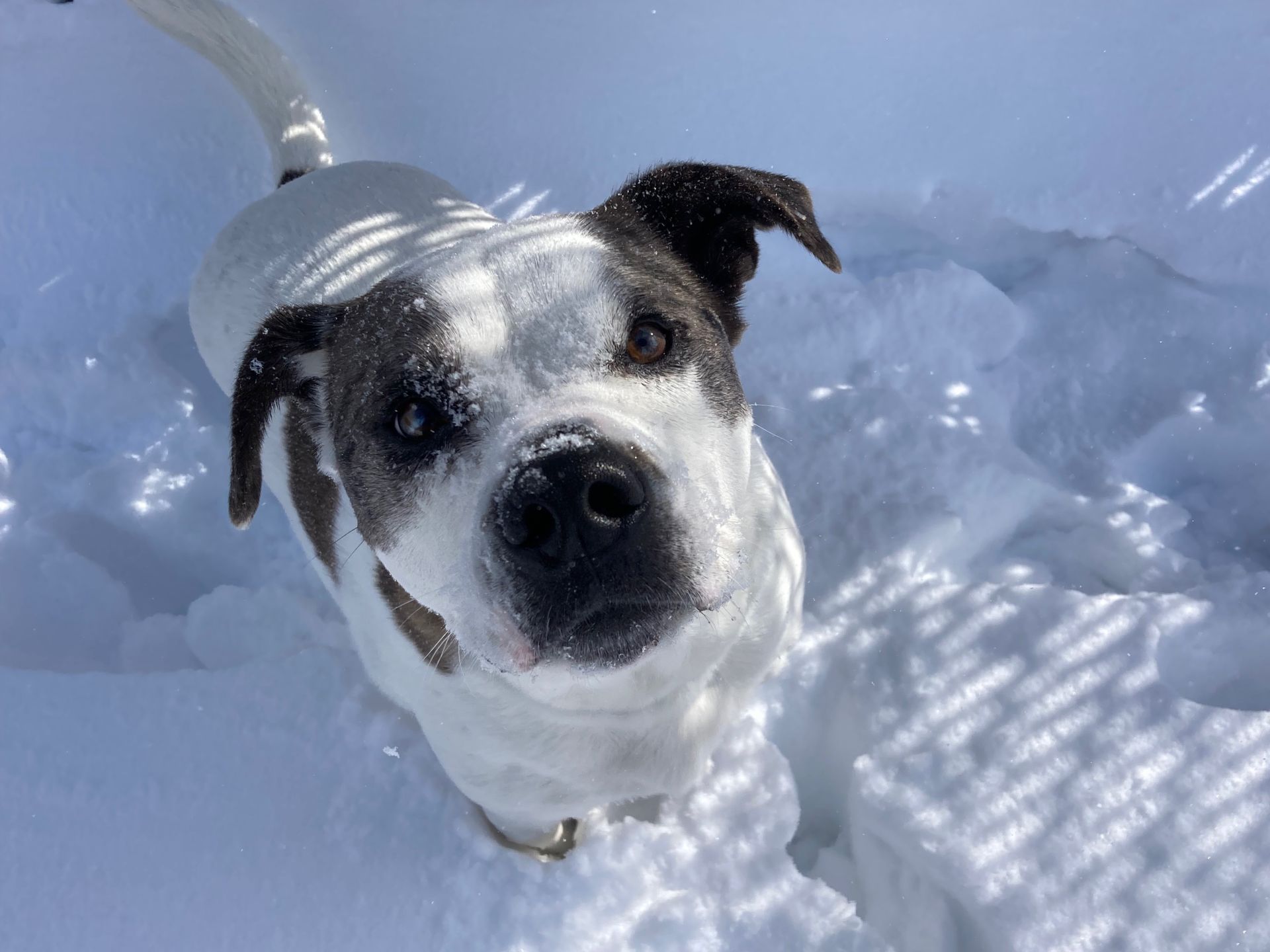Keep Your Furry Friends Comfortable and Safe
- Keep your pets indoors, especially when temperature reaches 30 degrees, with or without the wind-chill factor. Leaving pets outdoors presents a number of dangers including injury, frostbite and disorientation.
- If your pet goes outside, limit the time that your pet goes outside, limit the time that your pet stays outside, especially if they have a short coat and are sensitive to the cold weather. Consider a coat for short-haired pets.
- Young and senior pets can be especially vulnerable to cold temperatures. So keep them cozy and warm inside your home.
- Even though it’s cold, pets can still become dehydrated if they are getting a lot of exercise. Provide access to fresh clean water and for any animals who are outside like horses and goats. Make sure outdoor water bowls don’t freeze over.
- Massaging petroleum jelly or other paw protectants into paw pads before going outside can help protect from the cold, salt, and chemical agents. Booties provide even more coverage and can also prevent sand and salt from getting lodged between bare toes and causing irritation.
- Use non-scented cat litter to help increase traction on sidewalks for people and pets in icy conditions.
- Watch for anti-freeze or other chemicals that can leak under cars or in garages. This toxic liquid has a sweet taste, but can be deadly for pets. Quickly remove puddles or possible contamination by wiping down and rinsing appropriately. If your pet is exposed to anti-freeze, make note of the type and volume and seek immediate veterinary attention.
At OHS, we use a safe non-toxic ice melt on our sidewalks and driveways to melt the ice and keep our pets safe. We also have a great “snow crew” made up of volunteers who help care for the pets at OHS during bad weather.
- Frostbite: Dogs and cats can get frostbite on sensitive tissues like ears, nose, and feet if left outside.
- Weight gain: Indoor pets get less exercise in the cold months, so adjust their diets accordingly to prevent unhealthy weight gain.
- Before starting your car: make sure a cat hasn’t crawled underneath seeking shelter and warmth near the engine. Open the car hood or slap it noisily before starting the engine to awaken any animal sleeping there.
- Vehicle safety: try using “pet-friendly” antifreeze products and thoroughly cleaning up any spills.
- During walks: keep your dog on leash and under control during walks in the winter weather, especially during a snowstorm – dogs can lose scent in this weather and become lost. Always make sure yours always wears ID tags.
- Post-walk: check and wipe pets’ paws when they come back into the house because they can ingest road salt, antifreeze or other potentially dangerous chemicals when licking paws to clean them. Paw pads may also be cut by snow or encrusted ice.
- Cold cars: never leave your dog or cat alone in a vehicle during cold weather. A car can act as a refrigerator, causing the animal to develop hypothermia or freeze to death.
- Emergency numbers: keep the local emergency veterinarian’s or family veterinarian’s telephone number handy in your car and your home; possibly in your wallet.
- Use plastic food and water bowls rather than metal; when the temperature is low, your pet’s tongue can stick to cold metal.
- Provide a warm, elevated heated space with dry bedding for feral cats to escape from the cold and snow.
- Give outdoor cats more food. Outdoor animals need more calories in the winter to produce body heat, so increase the amount fed to these pets.
- The Feral Cat Coalition of Oregon has tips on how to make an easy outdoor shelter for feral cats.
Cold Weather Safety Tips for People
- Dress for warmth – opt for waterproof or water resistant clothing
- Layers are your friend – be sure to dress in multiple layers rather than one thick layer, such as just a sweatshirt. Try a long sleeved shirt, fleece jacket, coat, hat, gloves, ideally waterproof pants, like snow pants and long underwear underneath. Avoid cotton as it is a fabric that soaks up water.
- Be aware of people at a greater risk in cold weather, including senior citiziens and infants.
- Know the warning signs of hypothermia – red and cold skin, shivering, fatigue, confusion or memory loss, fumbling hands or slurred speech.
- Protect areas that are more sensitive to frostbite – fingers, toes, nose, ears, and face.
Multnomah County has resources available for the community and tips to care for when its cold.







